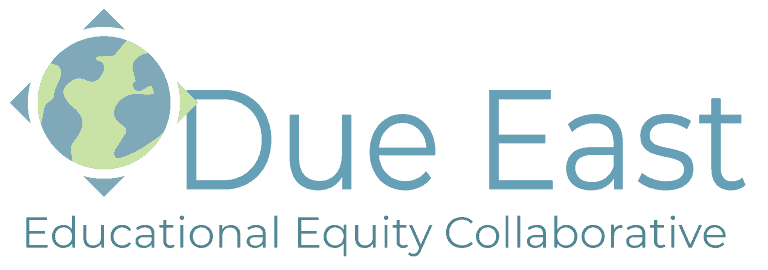Setting the Vision and Creating Accountability: Guiding our Schools with Equity Visioning
2020 has fostered reflection and awareness in many areas of personal life, family life, community life and institutional life. One area of growing collective reflection and awareness is around the fight for social justice and the advancement of systemic equity. Previous levels of injustice, inequity, racism and unwillingness to see systemic power and privilege paradigms have become unacceptable. Systems are being called out on practices, policies, and procedures that are harmful and called in to the fight for transformative shifts. It is within this context that many education institutions have decided to develop institutional equity vision statements. I have worked with numerous schools and districts to develop equity vision statements and lately I am being called on with increasing frequency to facilitate these conversations. In response to the growing interest in equity vision statements, I want to share important considerations, processes, and pitfalls when developing an institutional equity vision, along with examples of approaches to equity visioning.
What is an Equity Vision?
An equity vision is an articulation of how we intend to be and a commitment to action. An equity vision may declare that we are inclusive, reflective, responsive (ways of being) and we are steadfast advocates and transformative leaders (commitments to action) for equity. Equity vision statements define who we are (or intend to be) and a vision for our collective future. An equity vision encapsulates the organization’s core ideals regarding justice, equity, and anti-racism. It also provides a roadmap for advancing these ideals. Equity vision statements communicate concrete meaning and purpose to the entire school community.
We already have a traditional vision statement, why do we need an equity vision statement?
Most schools have a mission statement that outlines their purpose; some schools have a vision statement that aspires to uphold the values of their community. These same institutions often have deeply ingrained inequities that guide those very statements. This makes creating equity guided by existing mission and vision statements problematic. Inequity (the practices, policies and procedures of the institution that privilege some while disadvantaging and disenfranchising others) is endemic in schools. Additionally, inequity, racism, and injustice within school systems are highly predictable by race, gender, family language, income, etc. and are aligned with larger society’s inequity, racism, and injustice. In response to the predictable and endemic nature of inequity, redressing it requires focused attention and clear declarative commitments, not diffuse or generalized statements. In order to effectively guide our schools toward increasing equity, we have to specifically call out inequities and boldly communicate our commitment to and vision for equity.
How would our institution use an equity vision?
An equity vision is only as impactful as the ways that we use it. An equity vision is not merely a statement to place on our website or communication materials. It is not a statement for optics or to be politically correct. An equity vision is only a first step in making transformational changes to our institutional processes and outcomes. An equity vision should be used to evaluate our systems, hold ourselves accountable, and disrupt inequitable practices. Ways in which an equity vision can be used include:
- As an inspiration and shared direction (particularly in the face of disparate opinions about equity, or active lobbying for inequity by privileged community members)
- To clearly communicate equity values (to internal stakeholders and people outside of the school community)
- To serve as a foundation and filter for decision making (especially difficult decisions or decisions regarding limited resources)
- To review policies for inequitable impact and (re)align them with the equity vision
- To evaluate and guide curricular, instructional, and assessment choices
- As guidance for hiring, professional development, coaching, and evaluation
- As a tool for evaluation of institutional outcomes and public accountability to the entire school community (students, staff, families)
Who shapes our school’s equity vision?
Developing an equity vision is an iterative writing process. Shaping an equity vision is best done by a variety of stakeholders from the school community—with strong and intentional representation from people who are experiencing the most inequity. The equity visioning committee should include educators, administrators, students, families, community members, and other roles that support the school. While the committee should include a variety of perspectives and roles, it needs to be sized for productivity and effectiveness. Too large of a committee will bog down the process; too small of a committee will be missing important perspectives. A great size for a working group to develop an equity vision is 8-10 people. The equity vision can be shared for feedback from larger stakeholder groups at each point in the iterative process. It is also immensely helpful to have an outside facilitator to guide the equity visioning process. A facilitator who has a strong equity lens and foundation will assist the visioning committee in identifying unconscious habits of the system, provide resources and examples, assist in expanding or narrowing the scope of the vision, and implement a process that moves the committee toward tangible outcomes.
What are important considerations when creating an equity vision?
The pervasive and persistent nature of inequity, injustice and racism require the visioning process to attend to important considerations that are distinct from writing traditional organizational vision statements. Some key things to remember when crafting an equity vision:
- It is important to have working definitions of equity and inequity, racism and anti-racism, justice and injustice. These definitions will ground the equity visioning process.
- It is important to have a well-utilized and focused equity lens. A strong equity lens allows us to recognize inequity within the system, to name the equity strengths and challenges of the institution, and to write an equity vision that addresses the specific growth areas and needs.
- It is advisable to use an outside facilitator for equity visioning. Many organizations looking to write an equity vision (especially as a reaction to an incident or to societal pressures) do not yet have a well-developed equity lens or institutional habits.
- Equity vision statements should be aspirational and affirmational. We cannot limit ourselves to perceived barriers or palatable language. We must hold ourselves to high standards for equity and justice.
- Equity vision statements should be clear, concise, and actionable. Oftentimes when I work with a team to develop an equity vision we will also identify accompanying “in action” statements that describe what this equity vision looks like as a set of actions and outcomes.
- Equity vision statements should be engaging. It is best to supplement an equity vision statement with visuals, mottos or slogans, reflection questions, and action steps that help people understand, engage with, and actualize the equity vision.
- The equity vision should be informed by and responsive to the history and culture of the school. An effective equity vision will be connected to existing organizational values, mission and vision but should ultimately transform the culture of the school to become more equitable. The equity vision should be authentic, reflective of, and responsive to the whole school community.
- Equity vision statements should be developed with strong representation from the people who are experiencing the most inequity. (Déjà vu? Yes, I am stating this again. The importance of representation cannot be overstated.)
Just Do It!
Now that you have a definition of, purpose, and considerations for equity visioning, gather an equity visioning group to imagine and encourage your school toward systemic equity! Bring stakeholders together to create an equity vision that will define, motivate, and evaluate your school’s equity journey. As a team, dive in and look at these examples of educational equity vision statements and use this template to begin your equity visioning process. Go ahead… create an equity touchstone and foundation for your school community.
Reflection Questions:
- What are persistent and predictable areas of inequity in your school? Why are these inequities so persistent?
- Who are the people experiencing the most inequity in your schools? What do they tell you needs to be done to expand equity?
- If your school were more equitable, what would it look like? What actions would you take as an educational community? What commitments would you make? What would it feel like to be a community member?
- What words reflect your school’s equity values?
- Once you have an equity vision, how will you use it as a tool to advance equity? How will you make sure it’s not just words, but a living and active vision?
- Who needs to give input on your equity vision? Who needs to be thoroughly familiar with the equity vision? How will you gather this input and familiarize necessary stakeholders?


